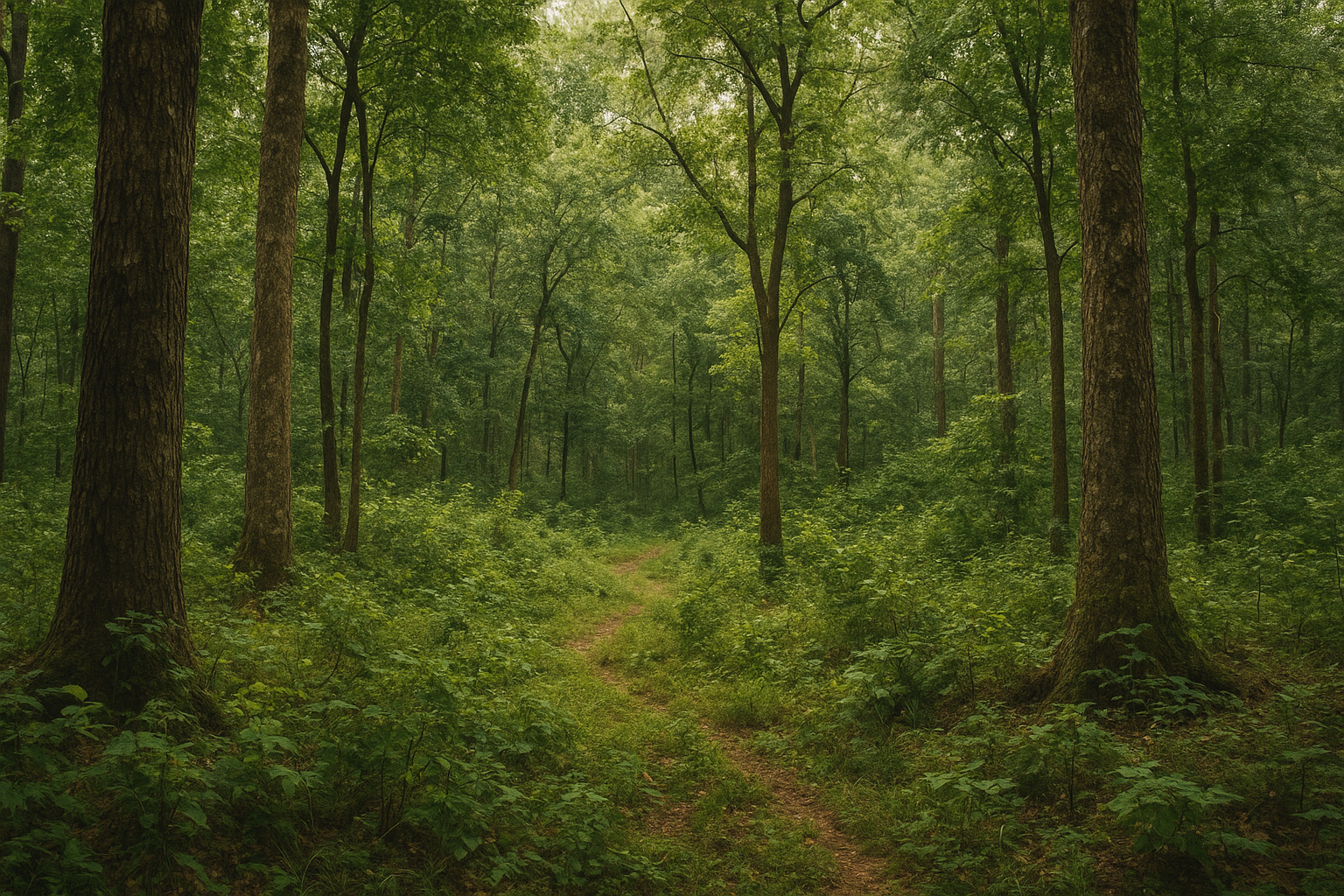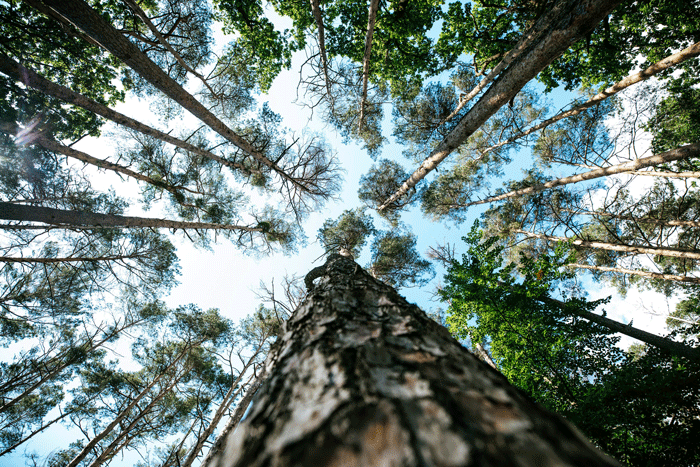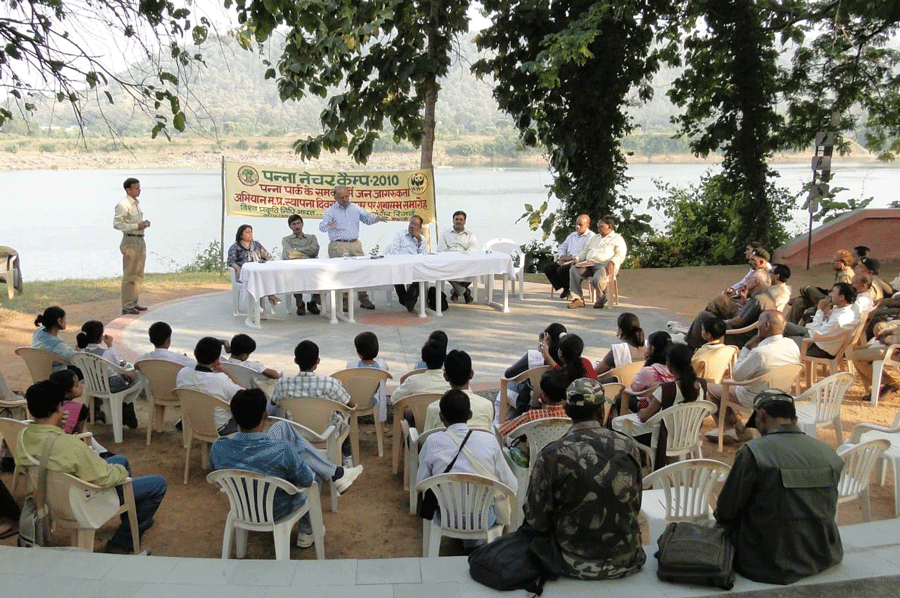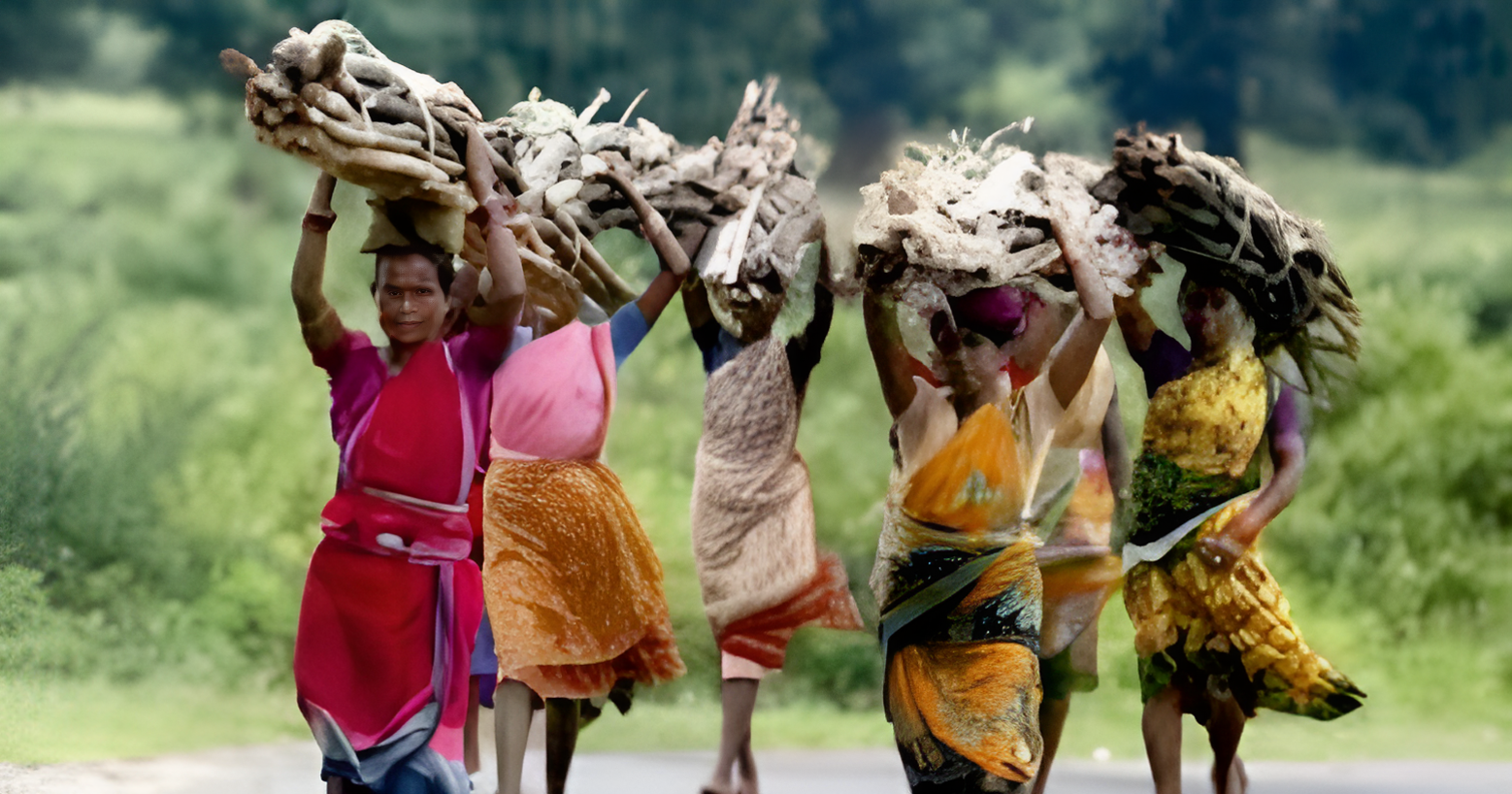WOMEN ROLE & CONTRIBUTION IN FORESTRY
On International Women’s Day, 8th March, Occasion
Kumud Dubey
As we know that the world has lost it’s about one third of forests due to development, industrialization and other anthropogenic reasons resulting in threatening of flora and fauna biodiversity. Due to deforestation, the earth is warming, and rainfall is more erratic, causing both floods and droughts. There are an estimated 100 million people in the country who live in and around forests and another 275 million for whom forests constitute an important source of livelihood. Local life ways of these people have been changed and livelihoods are being ruined due to deforestation. Therefore, conserving the forest becomes priority. Forestry has traditionally been considered as man dominated professions or designated as „Manly” in which men have been most decisively and solely entrenched. But now days, the situation is changing fast. Women participation has been witnessed substantially in several non-traditional sectors including forestry sector. Women are now practicing as foresters in both public and private service in sufficient numbers. Increasing evidence shows that women’s participation and decision-making in management of local forests significantly improves forest conditions and conservation. Especially, leadership by indigenous women, who have lived in sustainable balance with the natural world for generations, is crucial to preserving life on the planet alongside thriving communities. Women are involved in restoring forests through native species, protecting forests and economies through non-timber forest-based livelihoods, and developing responsible tourism to generate local livelihoods in process protecting wild places. Areas, in which women are playing a significant role in forestry, are discussed following:
Women Role in Collection of Forest Produce: Women are the primarily involved in collection of a wide range of NTFPs for subsistence and as a source of income. In developing countries, lives of rural women more depends on forestry and forest products for their food, fodder, fuel wood and other livelihood products. Of about three-quarters of all rural families depend on wood in cooking their food – fuel wood which is used and collected mainly by women. Forests are the source of foods enriching a predominantly cereal diet with protein, vitamins and minerals; forest also yield important economic products, like Mahua flower, Chiraunji, Sal seeds, Tendu leaves, medicinal plants, lac, that are gathered mainly by women. Plants growing in the forest provide most of the available medicines used in Ayurveda. Trees give shade to the home, and their foliage feeds their livestock that women widely keep around the home as a further source of food and income. Women are also involved in the work of minor forest products at home. Some important forest produce collected by women are describe below: Kendu Leaves: Kendu leaf or Tendu Leaf is leaf of forest tree Diospyros Melanoxylon which is well known nationalized product like Bamboo and Sal seed. Kendu leaf is one of the most important non-wood forest products of Uttar Pradesh, Jharkhand, Madhya Pradesh, Chhattisgarh, Odisha etc. Due to its unique characteristics, viz. Matching aroma with Tobacco, Hygroscopic nature of dry leaves to withstand crack, Thinness and pliability, gradual combustion, resistance to fungus attack etc., it is used for wrapping Bidi (country cigarette).
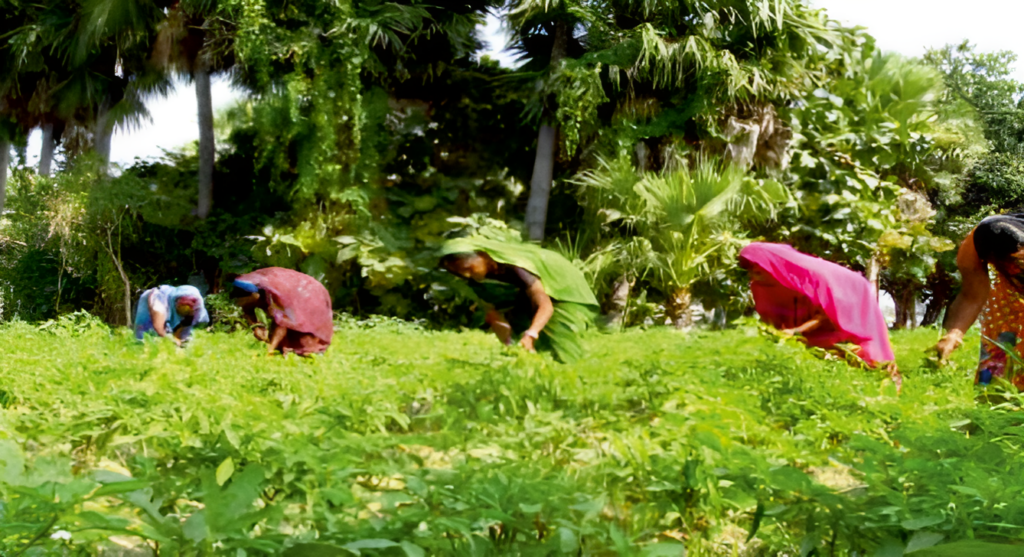
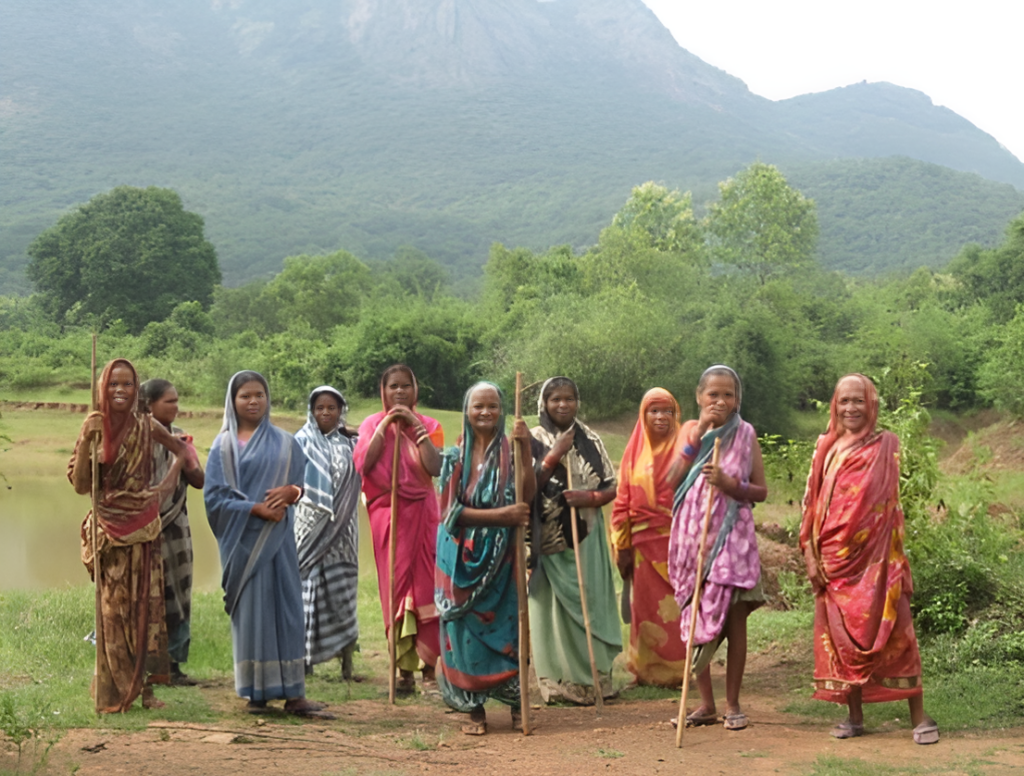


Mahua Flower & Seeds: Women are also involved in collection of Mahua flower from forest. Mahua (Madhuca longifolia) being the primary revenue-generating product, amounting to approximately 200 crores, in Chhattisgarh state only. Women are responsible for gathering Mahua flowers and seeds.
Mahua flowers, mainly used for brewing a local country liquor which is popular across India. It is a source of livelihood. Tribal women also utilize mahua flowers to prepare various delicious food dishes. Tribal women in Odisha use dry mahua flowers to prepare some value added dishes like laddus, cakes, jam, toffees, pickles, squash, pakodas and biscuits using and sell it in the local market. Mahua laddus are in high demand compared to other products. Most tribal women in the district are engaged in collecting mahua flowers from jungles between February and April every year.
Mahua seed collection Commence from June to mid-July. The yield of Mahua seeds varies (5-200 kg/tree), depending on the size and age of the tree. The kernels contain 20-50 percent oil and used in soap industry
Medicinal Plants Collections: Tribal women emerge as an ideal for the conservation of their community and the environment. Forest Department is empowering the villagers to manage, cultivate, and sell minor forest produce for the livelihoods of indigenous tribes. Tribal women have become the custodians of ethno-botanical knowledge. Their dependence on agriculture and the collection of medicinal plants, mahua, sal seeds and tendu leaves has shaped their way of life. Tribal women use Asparagus racemosus, an important medicinal plant and locally known as Dasamul due to its cluster roots. This wonder herb swiftly strengthens the weak and aids lactation for nursing mothers, becoming an invaluable aid during childbirth.
Collection of Fodder: In many regions, women play a crucial role in providing livestock with tree-based fodder. About 30 percent of fodder requirements are met from forests and about 25 percent of the country’s livestock graze on forestlands. The collection of fodder from forest is mainly done by women
Women Involved in Forest Conservation: Tribal Women, in Panna, in Chitrakoot & Sonbhadra area, are working for Forest Conservation. They are working mainly to restore Mahua trees, many of which were destroyed due to forest fires. They are also raising saplings in the community-managed nurseries. Women are trying to increase tree cover in their community forest boundaries with local species. Since mahua is the main source of income for the tribal community, the nurseries also serve as an opportunity for economic support to women. Tribal Women are blessed with diverse natural resources and evolved traditional knowledge of practising forest-based livelihoods. Mahua flower, mahua seeds, Tendu leaves, Sal Seeds, Medicinal plants are major source of income and nutrition.
Forests in Nayagarh, Odisha are rich in varieties of tubers, fruits, medicinal plants, bamboo, and Sal trees, but prone to illegal logging and smuggling. However, since the formation of women-led forest protection committees and patrolling contingents, instances of logging and smuggling have drastically decreased, helping to regenerate the forests” rich biodiversity. Women leaders from the Forest Protection Committees protect their forests from illegal logging and smuggling (photo credit: Y. Giri Rao).
Women participation of in forest governance: Women participation of in forest governance should be encouraged. The traditional knowledge of tribal women in particular to forests must be acknowledged. Tribal women consider forests sacred and have devised ways of co-existing that the rest of us have much to learn from. Tribal women have already been contributing to an increase in India’s forest cover. Be it the Kodarapalli women preserving ½rd of Odisha”s forests, or the women of Jharkhand”s Muturkham saving 50 hectares of forest land from the timber mafia. Yet, these women and their contribution fail to be acknowledged in reports of India’s forest cover increase. Studies have shown that women-led decision-making in forests benefits both the forest ecosystem and the local communities. Active policy leadership of women in a region is also more likely to motivate future female leaders.
Women Who Dedicated Their Lives To The Trees: Few women dedicated their lives in conserving the forest have been discussed below:
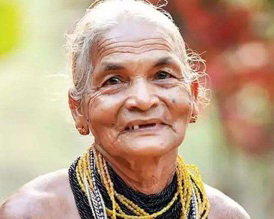
Tulasi Gowda, from Honnalli village in Ankola taluk of Karnataka, has not just planted countless saplings that will grow, and have grown up to become trees that help the world at large to live a better life, she has also helped prevent poachers from destroying wildlife, and has worked to prevent many forest fires. Owing to her mindblowingly vast and accurate repository of knowledge of flora, she has also advocated against practices of the government and plantation owners which negatively impact the environment. She was awarded the Padma Shri for her enormous contribution towards resuscitating the country’s forests. Tulasi says she started to seek solace in planting. Tulasi Gowda now spends her time planting still more trees, while also teaching children the importance and art of doing the same. “We need forests. Without forests, there will be drought, no crops, the sun will become unbearably hot. If the forest thrives, the country will as well. We need to create more forests,” she says. She was a consistent volunteer in the state”s afforestation program. After immensely helping them for years, the Forest Department finally recognised her efforts and gave her a permanent job as a planter of saplings just fourteen years ago. She is now retired and subsists on a small pension given by the Forest Department, and it is her only source of income. Tulasi Despite the fact that people like Tulasi Gowda have consistently and for centuries been protecting forests as part of their very way of life.
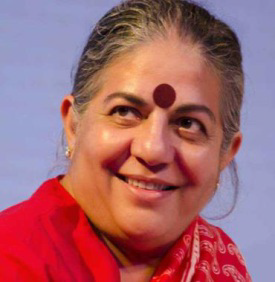
Vandana Shiva is an environmentalist who has spent most of her life in protection of biodiversity. She is the founder of„Navdanya‘ which is a research institute that aims to protect the diversity and integrity of native seeds along with promoting fair trade practices. This research institute was founded in 1991 and is dedicated to address the most important environmental and social justice issues. Women like Vandana Shiva are truly an inspiration for society.
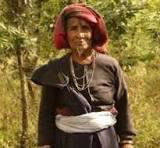
Prabha Devi, a 76Year Old Garhwali Woman who has planted an entire forest on her own in her village. She proved that age is just a number and you can achieve anything if you put your mind to it. She has planted a whole forest in her village and she is still at it even when she is approaching 80. The village of Palashat in Rudraprayag district now has an entire forest which is planted by her.
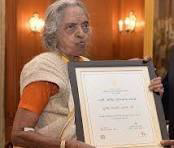
Kollakkayil Devaki Amma started the initiative of saving the environment with her own backyard. Her love for the environment and fear of climate change allowed her to curate a forest in the five acre distance around her home. She was influenced by her grandfather as he was the one who helped her to inculcate a love for horticulture. Her love for the environment increased after marrying Gopalkrishna Pillai, an English teacher.
Women in the Forest Service: Women have not been offered the same job opportunities within the realm of forestry as men have even in the “developed” world. Presently the scenario has been changed. From the time when the Imperial Forest Service was created way back in 1865, the Indian forest service has witnessed a sea change in its functioning and structure. One major milestone in this was the joining of 3 women officers as IFS in the year 1980. Since then, each year, lady officers continue to join and contribute to the service immensely. According to a statement of Mr. S. P. Yadav, IFS, the then President IFS Association-Central Unit (2021), there were 280 women IFS officers serving our nation (MoEF&CC, GOI, New Delhi website). There were nearly 5000 women frontline personnel according to a press release of MoEF&CC, New Delhi dated 8th March, 2021. These women officers are not only doing exemplary work in the field they are highly accomplished academically and also leading in the central and state government at policy making levels. Some prominent faces of Women IFS officers are mentioned below:
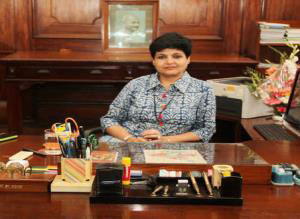
According to Dr Savita, IFS (1985), as the first woman Director of Forest Research Institute, Dehradun, “The institute takes its educational role very seriously and hopes the students and other visitors of FRI will be better informed about the role of forests in saving the environment and be inspired to plant more trees”. She also served as PCCF& HoFF, Himachal Pradesh.

Ms R. Sobha, an IFS officer of 1986 Batch from Telangana Cadre as first lady officer to hold the post of Head of the Forest Force in the Telangana state, R. Sobha has set a benchmark by bringing changes to the conventional working style of the Department in whichever capacity she has worked. She was instrumental in changing the face of the forest department.
The concept of land bank creation” was introduced by Ms Vasvi Tyagi, an IFS of 2004 Batch from Haryana Cadre. While working as DCF, Panipat, she motivated Gram Panchayats to provide land to the Forest department for plantations as Haryana is a forest-deficit state.
Plantation in degraded lands requires special care as they are prone to failure. Ms Shalini Raina, an IFS of 2001 Batch from Chhattisgarh Cadre and Ms Satovisha Samajder, an IFS of 2010 Batch from Chhattisgarh Cadre had proven an excellent combo of a CCF-DFO duo to successfully converted completely 50 ha land fallow degraded revenue land to a lush green forest. (Source IFS2021 Green Queens.pdf from MoEF&CC website)

Women Forest Officer at Lower Level: As front level forest officer, Ms. Prajna Dwivedi, Range Forest Officer from Uttar Pradesh Forest Department says “Unfortunately this department sees one of the least number of female employees, especially at the frontline level. Not an irony so, because of the harsh nature of job, long deep walks into Jungle, dominated by male counterparts: is slowly changing as women are more free than ever before and are their own decision makes”. She further mentions “Their encouragement in this field is, what I find,, would be more to their emotional end. When I entered the field as Range Forest Officer, I faced the question of how to have work-life balance. But never in reality I suffered any such difficulty.” She further quotes “The supportive roles of higher lady officers are overwhelming.”

According to Mrs Sangita, Assistant Conservator of Forest, Prayagraj “Forest is considered one of the most important natural resource and it’s become mandatory to preserve and conserve it. It’s FC important for maintaining the ecology and women play a very vital role in its protection. Women’s role is considered as the most familiar manager, collector and protector of forest. The destruction of forest mostly affects this group only as their lives are intertwined with the ecology. Now in the present era as women role is being recognized in every field so their role in ecology management must also be recognized. So to accelerate the active participation of women, joint management program has been started to constantly upgrade their involvement. But as we all know that the revolution takes time in the same way it is seen that that their contribution in forest management is passive regardless of diverse policy changes. Due to many cultural and other social constraints, women are unable to get involve in effective forest management activities. So at last it is very vital for gender participation in forest management which would accelerate the competence of forest institutions. It is seen that women’s contribution lead to better following of rules and a greater transparency in the working of the organization. It even leads to an improved conflict resolution and improved observance. So it’s important to regard the both genders participatiorı.” The women forest staff at lower level prefers the posting in office and not in field level. This is mainly due to harsh field conditions. There are no arrangements of seperate toilets and other essential facilities for ladies. Their protection is also at risk. She may be attacked or sexually molested. Though these issues are being changed slowly. Every workplace is gendered. Being gendered means: who you are, male or female, deciding where you work, what assignments you get, the kind of support or encouragement that you receive at your workplace. The Forest Service is no exception. As we see that from harvesting the forest products to forest management and conservation services, women are actively involved. Participation is increasing day by day. Government has become proactive. Women forest officers are contributing to all the levels. It is this rise in their numbers at higher levels that has triggered a positive cascade at all levels, especially at the level of the Forest Guard, which in many ways is the face of the Forest Department at the grass root level. It is this change which turned out to be a game changer in ensuring the ‘gender balance’ in the forest service. One of the measures needed to change this state of affairs is to increase the number of women foresters at lower level to facilitate communication and participation of women at harvesting managerial level. Participation of women in the forest derived economy is significant, as they are primary collectors of forest produce, as wage employees in forestry operations and forest-based enterprises and in forest management. The dominant role played by women in mass movements to protect forests. Women are capable of carrying out most forestry tasks, even laborious works like nursery works, plantation works as pits digging, watering and other soil work. They are especially adept at nursery work. Besides creating jobs for women under social forestry programs, their role in forest supervision must also be supported. Women involved in small-scale forest-based industries, like „Bidi” rolling (country cigarettes) and basket-making must be helped to improve their skills and to learn to manage the entire process from collection to processing and sale.
Some Non-Governmental Organizations like Women’s Earth Alliance (WEA) are working for environment and forest in association with Women. WEA is on a mission to protect our environment, end the climate crisis, forest protection and ensure a just, thriving world by empowering women’s leadership.

Dr. Kumud Dubey
Senior Scientist
ICFRE-ERC, Prayagraj







